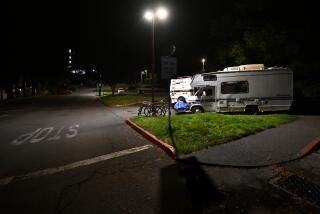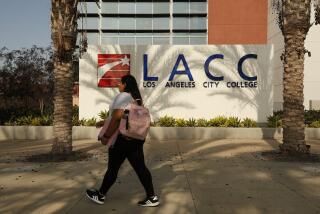Community colleges’ promise meets bitter reality
In 1971, I was a high school graduate without much money and even less of a plan. A community college campus seemed like a good place to try to figure things out, so I enrolled at Diablo Valley College in the San Francisco Bay Area.
In two years there, I accomplished two things. I got halfway to a college degree at very little cost, and I decided I wanted to be a journalist. I then transferred to San Jose State, graduated two years later, and began my career as a sportswriter at the Davis branch of the Woodland Daily Democrat.
It wasn’t until much later that I came to fully appreciate the value of those two years at Diablo Valley College, and I think it’s fair to say that the state of California got something in return. Like millions of others who have passed through the community college system, I became a contributing taxpayer, supporting the public institutions that serve all of us.
But the grand master plan that once set California apart and helped drive its economic engine — a strong K-12 commitment and a high-quality college education accessible to just about everyone — has unraveled. And the situation could get even worse on Tuesday if Proposition 30 — Gov. Brown’s proposal to raise $6 billion through income tax increases on the wealthy and a quarter-cent sales tax hike — is voted down.
K-12 schools will take the biggest hit, but I’ve already written about their plight. Last week, I stopped by Glendale Community College to talk to students and staff about the waves of cuts over the last few years and the prospect of yet another tsunami.
“It’s never been this bad,” said economics professor Mark Maier, who’s been teaching at the college for 23 years.
Maier said that in the last few years, 10 to 20 students have been turned away from every class he teaches. Most of them end up having to try again the next semester, but with course offerings shrinking steadily, it often takes students several years to get the credits they need.
Ben Keller, 35, said he sat at his computer on the most recent registration day, his finger on the trigger like a contestant on a game show. He needed a social studies class, but knew he’d be competing for one of 80 seats with dozens of others when the online registration officially began.
At the designated moment, he clicked and came up short.
“I was 20th on the wait list, so essentially I was number 100 to register,” said Keller, who was laid off as a human resources manager and decided to go back to school for a business degree that will give him a better chance of finding steady work.
Keller attended two different sections of the class anyway for several weeks, hoping that his persistence would convince one of the professors to give him a break. The gamble paid off this time, but it doesn’t always.
Still, this kind of maneuvering is likely to become even more necessary across the 112-school community college system if Proposition 30 fails, triggering an estimated $338 million in immediate cuts. Those cuts would come on top of $809 million the colleges have lost since the 2008-09 school year, with nearly 25% of the class offerings eliminated and almost a half million students turned away.
“The master plan is a myth,” said James Riggs, interim president of Glendale College, which has been forced to drop 1,000 courses since 2008. “If it’s a social contract, we’re in breach of contract.”
If he sounds a little dramatic, it’s because Riggs sees the outlines of a dystopian “Brave New World,” in which educators are demonized and education continues to lose public funding.
Riggs is on a one-year break from Cal State Stanislaus, where he teaches in the education leadership doctoral program. At Glendale College, a community anchor for 85 years, his days are now spent in education triage, planning how to deal with an estimated $4.5-million cut the college will face if Prop. 30 fails. Riggs said 250 more classes may have to be chopped, with perhaps 20 layoffs. Teachers have already voted themselves a 5% pay cut to help the school get by.
Riggs handed me a 22-page packet he compiled for his doctoral students.
“The Under-Educated American,” says the title. “A Case for Closing the Achievement Gap.”
The material charts the national rise of income inequality against a projected shortage of college-educated people.
“By 2020, we’ll be 20 million degrees short,” said Riggs, even though “closing the income gap has substantial social and individual benefits.”
As they were back in my day, community colleges are great equalizers. When you walk through the door, you’re on the path to self-sufficiency and upward mobility. There’s nothing fancy or prestigious about them, but they train nurses and firefighters and police, and the state estimates a $4.50 return on every $1 invested in a community college student.
At Glendale Community, where Ben Keller is working on his business degree, Carol Wong, 23, has switched from physics to business as she tries to find her way in the world. Arman Gevorkyan, 19, worked in retail jobs long enough to know he wants and needs a college degree to do better. And Cameron McGee, 22, hopes the challenge and headache of fighting for classes in such a competitive environment will pay off later.
Up at Diablo Valley College, the school president is Peter Garcia, a guy I’ve known since we were kids. On Thursday, he met with faculty leaders to plan for possible cuts that will affect both existing and incoming students.
“The opportunity you had to search for your future is being lost to thousands of students,” Garcia said by email. “I wish I had better news.”
More to Read
Start your day right
Sign up for Essential California for news, features and recommendations from the L.A. Times and beyond in your inbox six days a week.
You may occasionally receive promotional content from the Los Angeles Times.







